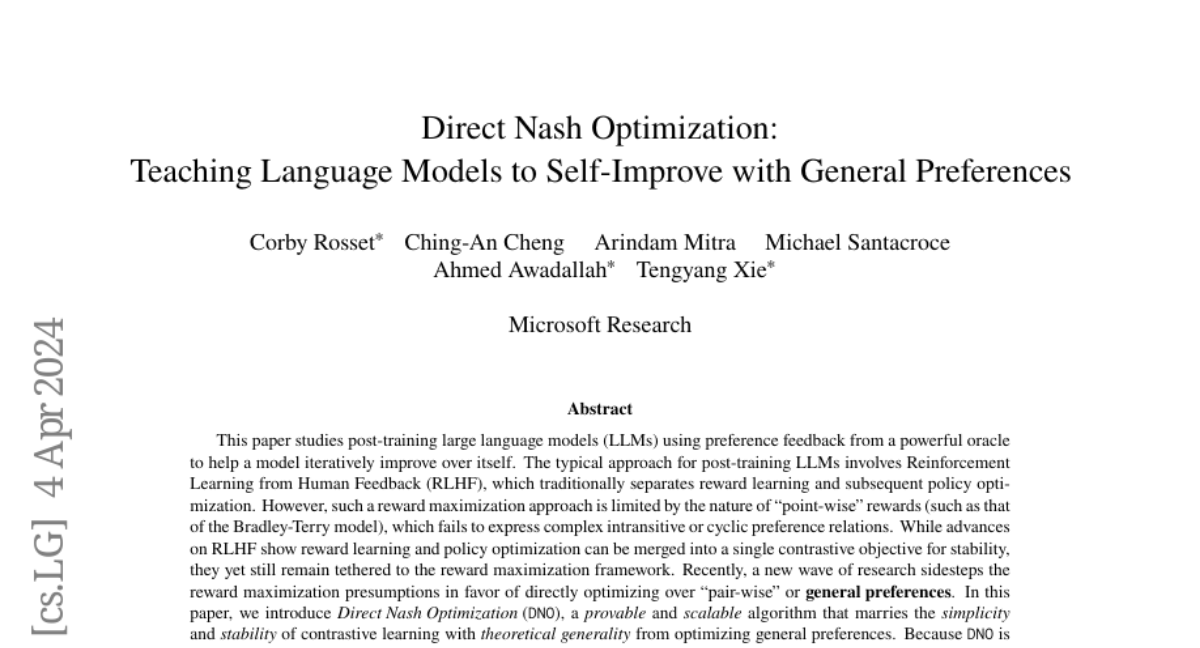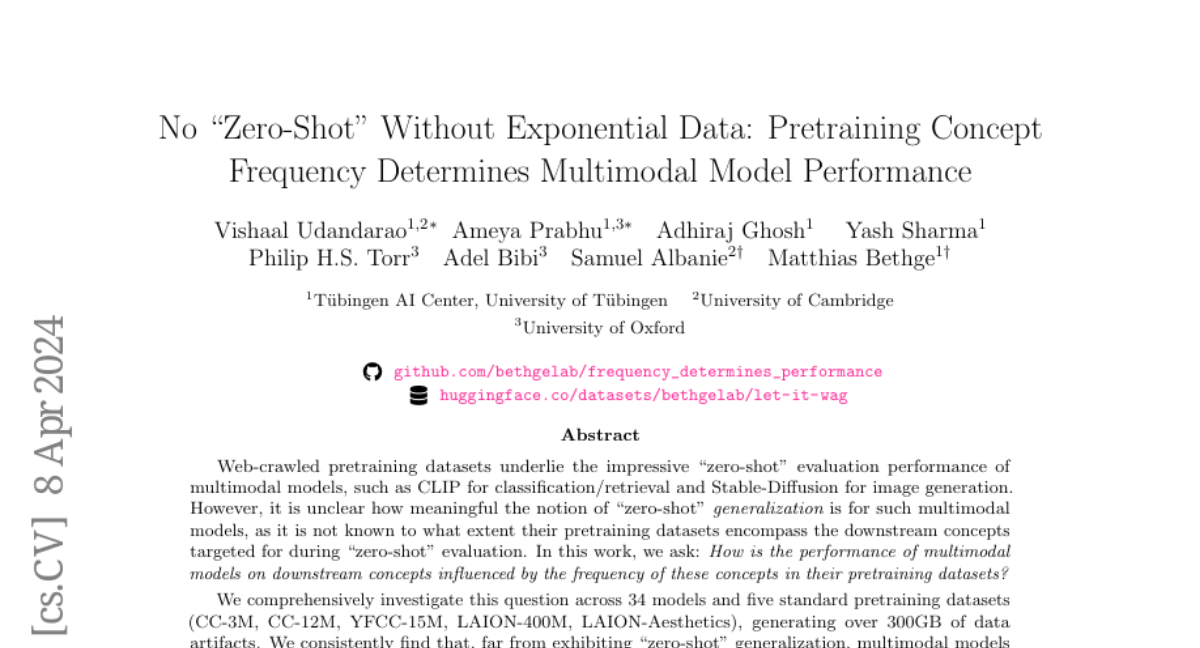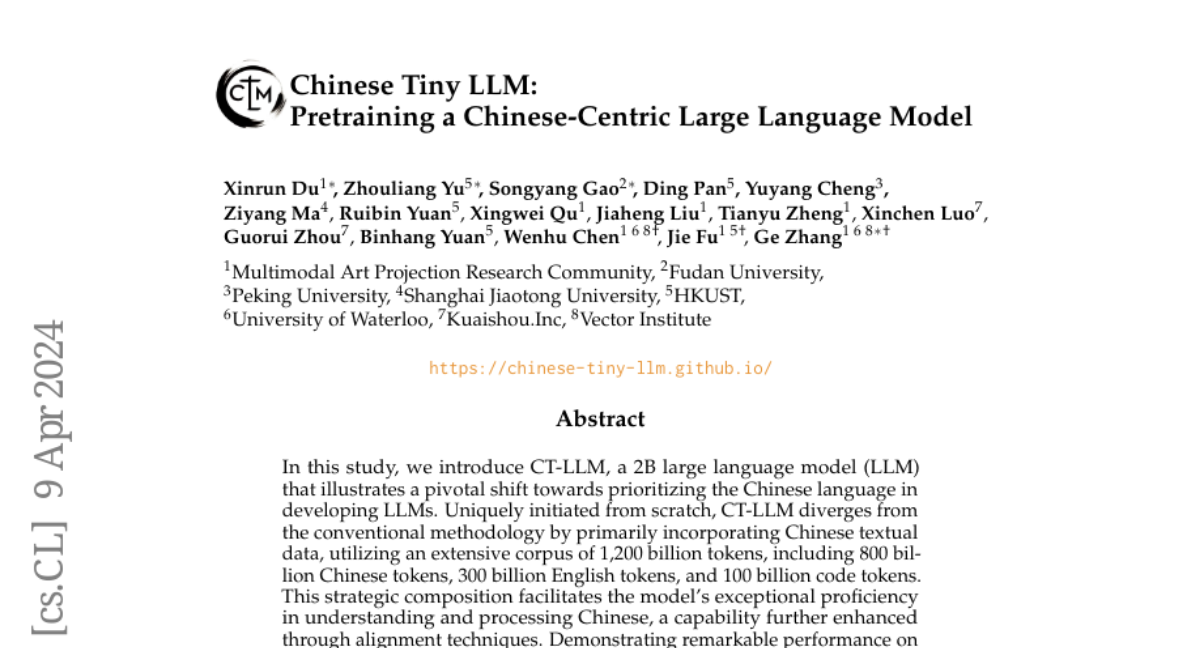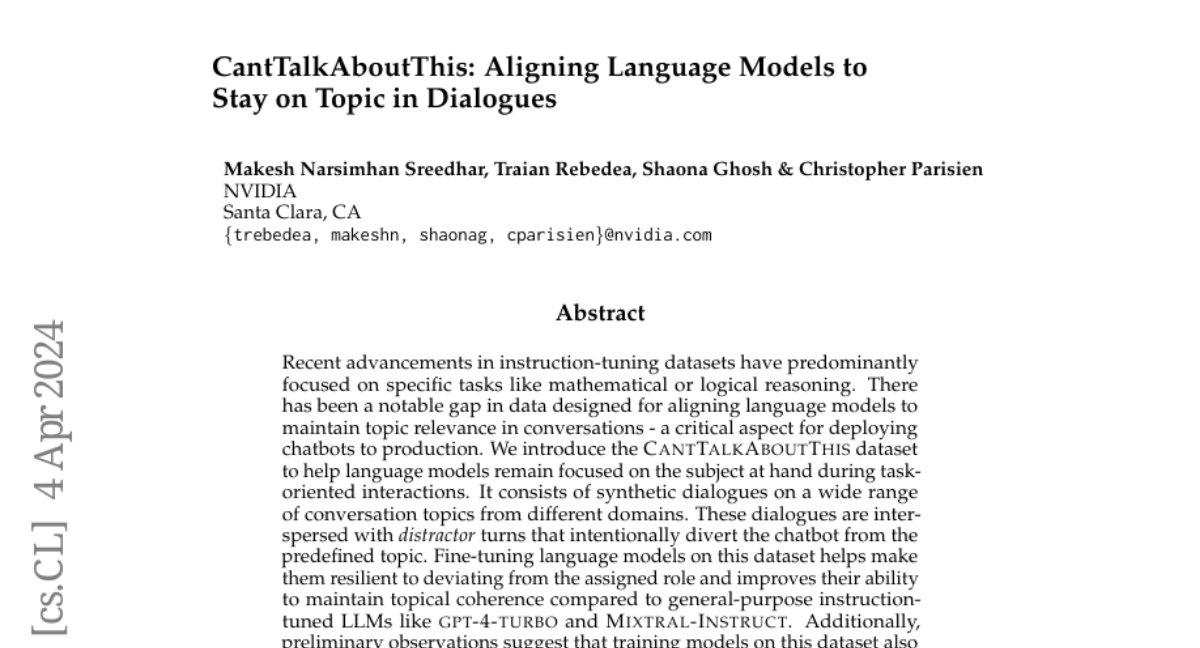AutoWebGLM: Bootstrap And Reinforce A Large Language Model-based Web Navigating Agent

Large language models (LLMs) have fueled many intelligent agent tasks, such as web navigation -- but most existing agents perform far from satisfying in real-world webpages due to three factors: (1) the versatility of actions on webpages, (2) HTML text exceeding model processing capacity, and (3) the complexity of decision-making due to the open-domain nature of web. In light of the challenge, we develop AutoWebGLM, a GPT-4-outperforming automated web navigation agent built upon ChatGLM3-6B. Inspired by human browsing patterns, we design an HTML simplification algorithm to represent webpages, preserving vital information succinctly. We employ a hybrid human-AI method to build web browsing data for curriculum training. Then, we bootstrap the model by reinforcement learning and rejection sampling to further facilitate webpage comprehension, browser operations, and efficient task decomposition by itself. For testing, we establish a bilingual benchmark -- AutoWebBench -- for real-world web browsing tasks. We evaluate AutoWebGLM across diverse web navigation benchmarks, revealing its improvements but also underlying challenges to tackle real environments. Related code, model, and data will be released at \url{https://github.com/THUDM/AutoWebGLM}.
Stream of Search (SoS): Learning to Search in Language

Language models are rarely shown fruitful mistakes while training. They then struggle to look beyond the next token, suffering from a snowballing of errors and struggling to predict the consequence of their actions several steps ahead. In this paper, we show how language models can be taught to search by representing the process of search in language, as a flattened string -- a stream of search (SoS). We propose a unified language for search that captures an array of different symbolic search strategies. We demonstrate our approach using the simple yet difficult game of Countdown, where the goal is to combine input numbers with arithmetic operations to reach a target number. We pretrain a transformer-based language model from scratch on a dataset of streams of search generated by heuristic solvers. We find that SoS pretraining increases search accuracy by 25% over models trained to predict only the optimal search trajectory. We further finetune this model with two policy improvement methods: Advantage-Induced Policy Alignment (APA) and Self-Taught Reasoner (STaR). The finetuned SoS models solve 36% of previously unsolved problems, including problems that cannot be solved by any of the heuristic solvers. Our results indicate that language models can learn to solve problems via search, self-improve to flexibly use different search strategies, and potentially discover new ones.
Direct Nash Optimization: Teaching Language Models to Self-Improve with General Preferences

This paper studies post-training large language models (LLMs) using preference feedback from a powerful oracle to help a model iteratively improve over itself. The typical approach for post-training LLMs involves Reinforcement Learning from Human Feedback (RLHF), which traditionally separates reward learning and subsequent policy optimization. However, such a reward maximization approach is limited by the nature of "point-wise" rewards (such as Bradley-Terry model), which fails to express complex intransitive or cyclic preference relations. While advances on RLHF show reward learning and policy optimization can be merged into a single contrastive objective for stability, they yet still remain tethered to the reward maximization framework. Recently, a new wave of research sidesteps the reward maximization presumptions in favor of directly optimizing over "pair-wise" or general preferences. In this paper, we introduce Direct Nash Optimization (DNO), a provable and scalable algorithm that marries the simplicity and stability of contrastive learning with theoretical generality from optimizing general preferences. Because DNO is a batched on-policy algorithm using a regression-based objective, its implementation is straightforward and efficient. Moreover, DNO enjoys monotonic improvement across iterations that help it improve even over a strong teacher (such as GPT-4). In our experiments, a resulting 7B parameter Orca-2.5 model aligned by DNO achieves the state-of-the-art win-rate against GPT-4-Turbo of 33% on AlpacaEval 2.0 (even after controlling for response length), an absolute gain of 26% (7% to 33%) over the initializing model. It outperforms models with far more parameters, including Mistral Large, Self-Rewarding LM (70B parameters), and older versions of GPT-4.
RL for Consistency Models: Faster Reward Guided Text-to-Image Generation

Reinforcement learning (RL) has improved guided image generation with diffusion models by directly optimizing rewards that capture image quality, aesthetics, and instruction following capabilities. However, the resulting generative policies inherit the same iterative sampling process of diffusion models that causes slow generation. To overcome this limitation, consistency models proposed learning a new class of generative models that directly map noise to data, resulting in a model that can generate an image in as few as one sampling iteration. In this work, to optimize text-to-image generative models for task specific rewards and enable fast training and inference, we propose a framework for fine-tuning consistency models via RL. Our framework, called Reinforcement Learning for Consistency Model (RLCM), frames the iterative inference process of a consistency model as an RL procedure. RLCM improves upon RL fine-tuned diffusion models on text-to-image generation capabilities and trades computation during inference time for sample quality. Experimentally, we show that RLCM can adapt text-to-image consistency models to objectives that are challenging to express with prompting, such as image compressibility, and those derived from human feedback, such as aesthetic quality. Comparing to RL finetuned diffusion models, RLCM trains significantly faster, improves the quality of the generation measured under the reward objectives, and speeds up the inference procedure by generating high quality images with as few as two inference steps. Our code is available at https://rlcm.owenoertell.com
No "Zero-Shot" Without Exponential Data: Pretraining Concept Frequency Determines Multimodal Model Performance

Web-crawled pretraining datasets underlie the impressive "zero-shot" evaluation performance of multimodal models, such as CLIP for classification/retrieval and Stable-Diffusion for image generation. However, it is unclear how meaningful the notion of "zero-shot" generalization is for such multimodal models, as it is not known to what extent their pretraining datasets encompass the downstream concepts targeted for during "zero-shot" evaluation. In this work, we ask: How is the performance of multimodal models on downstream concepts influenced by the frequency of these concepts in their pretraining datasets? We comprehensively investigate this question across 34 models and five standard pretraining datasets (CC-3M, CC-12M, YFCC-15M, LAION-400M, LAION-Aesthetics), generating over 300GB of data artifacts. We consistently find that, far from exhibiting "zero-shot" generalization, multimodal models require exponentially more data to achieve linear improvements in downstream "zero-shot" performance, following a sample inefficient log-linear scaling trend. This trend persists even when controlling for sample-level similarity between pretraining and downstream datasets, and testing on purely synthetic data distributions. Furthermore, upon benchmarking models on long-tailed data sampled based on our analysis, we demonstrate that multimodal models across the board perform poorly. We contribute this long-tail test set as the "Let it Wag!" benchmark to further research in this direction. Taken together, our study reveals an exponential need for training data which implies that the key to "zero-shot" generalization capabilities under large-scale training paradigms remains to be found.
Chinese Tiny LLM: Pretraining a Chinese-Centric Large Language Model

In this study, we introduce CT-LLM, a 2B large language model (LLM) that illustrates a pivotal shift towards prioritizing the Chinese language in developing LLMs. Uniquely initiated from scratch, CT-LLM diverges from the conventional methodology by primarily incorporating Chinese textual data, utilizing an extensive corpus of 1,200 billion tokens, including 800 billion Chinese tokens, 300 billion English tokens, and 100 billion code tokens. This strategic composition facilitates the model's exceptional proficiency in understanding and processing Chinese, a capability further enhanced through alignment techniques. Demonstrating remarkable performance on the CHC-Bench, CT-LLM excels in Chinese language tasks, and showcases its adeptness in English through SFT. This research challenges the prevailing paradigm of training LLMs predominantly on English corpora and then adapting them to other languages, broadening the horizons for LLM training methodologies. By open-sourcing the full process of training a Chinese LLM, including a detailed data processing procedure with the obtained Massive Appropriate Pretraining Chinese Corpus (MAP-CC), a well-chosen multidisciplinary Chinese Hard Case Benchmark (CHC-Bench), and the 2B-size Chinese Tiny LLM (CT-LLM), we aim to foster further exploration and innovation in both academia and industry, paving the way for more inclusive and versatile language models.
CantTalkAboutThis: Aligning Language Models to Stay on Topic in Dialogues

Recent advancements in instruction-tuning datasets have predominantly focused on specific tasks like mathematical or logical reasoning. There has been a notable gap in data designed for aligning language models to maintain topic relevance in conversations - a critical aspect for deploying chatbots to production. We introduce the CantTalkAboutThis dataset to help language models remain focused on the subject at hand during task-oriented interactions. It consists of synthetic dialogues on a wide range of conversation topics from different domains. These dialogues are interspersed with distractor turns that intentionally divert the chatbot from the predefined topic. Fine-tuning language models on this dataset helps make them resilient to deviating from the role assigned and improves their ability to maintain topical coherence compared to general-purpose instruction-tuned LLMs like GPT-4-turbo and Mixtral-Instruct. Additionally, preliminary observations suggest that training models on this dataset also enhance their performance on fine-grained instruction following tasks.